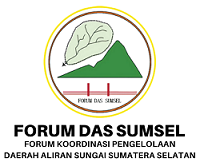Bio-nematicides Processing from Chicken Manure Waste Enriched with Trichoderma sp Fungi in Pangkalan Gelebak Village
Abstract
The negative impact of using synthetic pesticides is harmful to health and damaging the environment. Pesticide residues can endanger health and reduce the competitiveness of agricultural products. The use of pesticides includes synthetic nematicides being suppressed or even avoided. One alternative to nematode control that is safe for health and environmentally friendly is bionematicide in organic chicken manure enriched with Trichoderma sp. Production of bio nematicides is an option to be applied by the farmer. This method of making bio nematicides uses simple technology, is practical, inexpensive, and easy to do at the farm level. In addition, the manufacture of this bionematicide will increase the benefits of chicken manure waste. This Community Service Activity that carried out in Pangkalan Gelebak Village, Rambutan District, Banyuasin Regency, on May 6, 2020. The result of this activity is that the farmers are very enthusiastic and motivated to make bionematicide. The bio nematicide produced is expected to control root-knot nematodes on cultivated plants to increase crop production and reduce dangerous synthetic pesticides. Bio nematicide uses are free from toxic pesticides, safe for health, more environmentally friendly, and will ultimately improve the welfare of farmers
Full Text:
PDFReferences
Erwanti, Y., Mardius, T., Habazar, T,. dan Bachtiar, A. (2003). Studi Kemampuan Isolat-Isolat Jamur Trichoderma spp. yang Beredar di Sumatera Barat untuk Mengendalikan Jamur Patogen Sclerotium roflsii pada Bibit Cabai. Prosiding Kongres dan Seminar Nasional Ilmiah Perhimpunan Fitophatologi Indonesia (PFI), Bogor, Indonesia.
Hanudin, dan Marwoto, B. (2012). Prospek Penggunaan Mikroba Antagonis sebagai Agens Pengendalian Hayati Penyakit Utama pada Tanaman Hias dan Sayuran. Jurnal Litbang Pertanian. 3(1). 8-13.
Kullnig, C., Mach, R.L., Lorito, M., and Kubicek, C.P. (2000). Enzyme Diffusion from Trichoderma atroviride (=T. harzianum P1) to Rhizoctonia solani is a Prerequisite for Triggering of Trichoderma each 42 Gene Expression Before Mycoparasitic Contact. Appl. Environtment. Microbiol. 66. 2232-2239.
Meyer, S.L.F., Roberts, D.P., Chitwood, D.J. Carta, L.K., Lumsden, R.D., and Mao, W. (2001). Application of Burkholderia cepacia and Trichoderma virens, Alone and in Combinations, Against Meloidogyne incognita on Bell Pepper. Nematropica. 31.75–86
Naserinasab, F., Sahebani, N., and Etebarian, H.R. (2011). Biological Control of Meloidogyne javanica by Trichoderma harzianum BI and Salicylic Acid on Tomato. African Journal of Food Science. 5. 276–280.
Oka, Y., Koltai, H., Bar-eyal, M., Mor, M., Sharon, E., Chet, I., and Spiegel, Y. (2000). New Strategies for the Control of Plant-Parasitic Nematodes. Pest Manage. Sci. 56. 983-988.
Purwanti, Y., Nunilahwati, H., dan Khodijah (2018a). Pemanfaatan Jamur Antagonis dalam Penerapan Pengendalian Nematoda Puru Akar Ramah Lingkungan. Palembang: Penerbit NoerFikri.
Purwanti, Y., Nunilahwati, H., dan Khodijah. (2018b). Efek Bionematisidal Terhadap Serangan Nematoda Puru Akar Pada Beberapa Takaran. Prosiding Seminar Nasional Lahan Suboptimal Tahun 2018, Palembang, Indonesia, 198-205.
Purwanti, Y., Nunilahwati, H., dan Khodijah. (2018c). Potensi Pemanfaatan Jamur Antagonis Sebagai Agens Pengendali Hayati Nematoda Puru Akar pada Pertanaman Sayuran Dataran Rendah Sumatera Selatan. Prosiding Seminar Nasional Perhimpunan Entomologi Indonedia (PEI) Cabang Palembang, Palembang, Indonesia.
Saba H, Vibhash, D., Manisha, M., Prashant, K.S., and Farhan, H. (2012). Trichoderma A Promising Plant Growth Stimulator and Biocontrol Agent. Mycosphere. 3(4). 524–531.
Sanchez-Bayo, F., Baskaran, S., and Kennedy, I.B. (2002). Biological Relativerisk (Eco-RR) Another Approach for Risk Assesment of Pesticide in Agriculture. Agricultura, Ecosystems, and Environment. 91. 37-57
Sharon, E., Bar-Eyal, M., Chet, I., Herrera-Estrella, A, Kleifeld, O., and Spiegel, Y. (2001). Biological Control of the Root-Knot Nematode Meloidogyne javanica by Trichoderma harzianum. Phytopathology. 91(7). 687-693.
Soesanto, L., Mugiastuti, E., Rahayuniati, R.F., dan Dewi, R.S. (2013). Uji Kesesuaian Empat Isolat Trichoderma spp. dan Daya Hambat Invitro terhadap Beberapa Patogen Tanaman. Jurnal HPT Tropika. 13(2). 117-123.
Winarto, T., (2010). Aktivitas Antagonistik dan Karakteristik Jamur yang Berasosiasi dengan Nematoda Bengkak Akar (Meloidogyne spp.) pada Tanaman Tomat. Resipotary unandac.id/6460/1/artikel pdf. (10 Maret 2017).
DOI: https://doi.org/10.32502/altifani.v2i1.3843
Refbacks
- There are currently no refbacks.
Copyright (c) 2021 Altifani Journal: International Journal of Community Engagement
Indexed by:
Altifani Journal: International Journal of Community Engagement
Diterbitkan oleh Fakultas Pertanian, Universitas Muhammadiyah Palembang
Contact Person:
Rika Puspita Sari, M.Si (HP/WA: +62 813-7490-0341)
Klinik Publikasi Pertanian, Faculty of Agriculture, Universitas Muhamamdiyah Palembang
JL. Jend.A.Yani 13 Ulu Palembang, South Sumatra, Indonesia
Tel. (+62)711-511731; Email: kppfpump@gmail.com; Website: https://jurnal.um-palembang.ac.id/altifani

This work is licensed under a Creative Commons Attribution 4.0 International License.









.png)
14.png)





